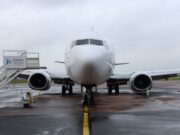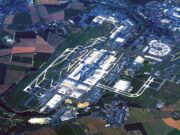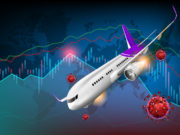
Several years ago, my wife and I were flying to the U.S. Virgin Islands for a little mid-winter R&R sans kids. Moments before anticipated touchdown at St. Thomas’ Cyril E. King Airport, it flashed through my mind that the airplane was landing long. Almost at that same moment, we heard and felt the roar of the engines as the pilots opted to go around and try again. A little spooked, my wife asked what had just happened. As I explained the concept of a go-around she started to laugh. After years of patiently listening to me blather on about this or that technology or process, she found it funny that “go-around” really is a technical term.
But go-arounds are no laughing matter. Runway excursions account for one-third of all accidents, and the greatest risk factor for excursions is the unstable approach. An unstable approach should result in a go-around, but usually does not. In fact, according to Foundation research, only 3 percent of all unstable approaches result in go-arounds. Why is that?
In 2011, the Foundation launched a Go-Around Decision Making and Execution Project, the intent of which is to mitigate runway excursions caused by unstable approaches by achieving a higher level of pilot compliance with go-around policies. With this issue of AeroSafety World, we are beginning a series of articles that will take an in-depth look at the results of the project’s work to date. The first article in the series begins on p. 22 and was written by J. Martin Smith, Ph.D.; David W. Jamieson, Ph.D.; and Capt. William F. Curtis of The Presage Group. I’d like to thank all three gentlemen for their work on the Foundation’s go-around project and for the hours they put into crafting the article. I’m looking forward to the next installment.
As always, we welcome feedback from our readers.
Kudos and Thanks
While I’m handing out thanks, I want to mention long-time Director of Technical Programs Jim Burin. Careful readers of ASW will note on p. 6 that Jim has a new title and is transitioning into the role of Foundation Fellow. We won’t be seeing Jim in the office as much, but he will continue to be engaged in the Foundation’s activities. In my nearly 10 months at the Foundation, Jim has been an invaluable source of knowledge and ideas, and has never been shy about letting me know what details he likes and doesn’t like in ASW articles. Sometimes the best medicine is the most difficult to swallow. Thanks, Jim.


